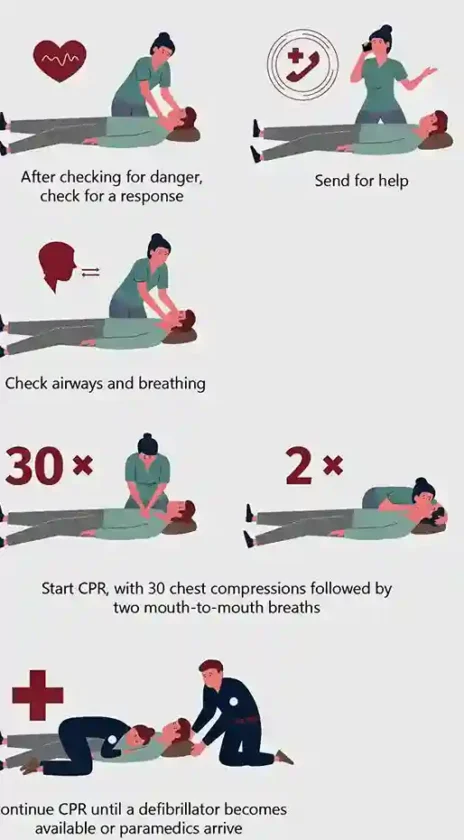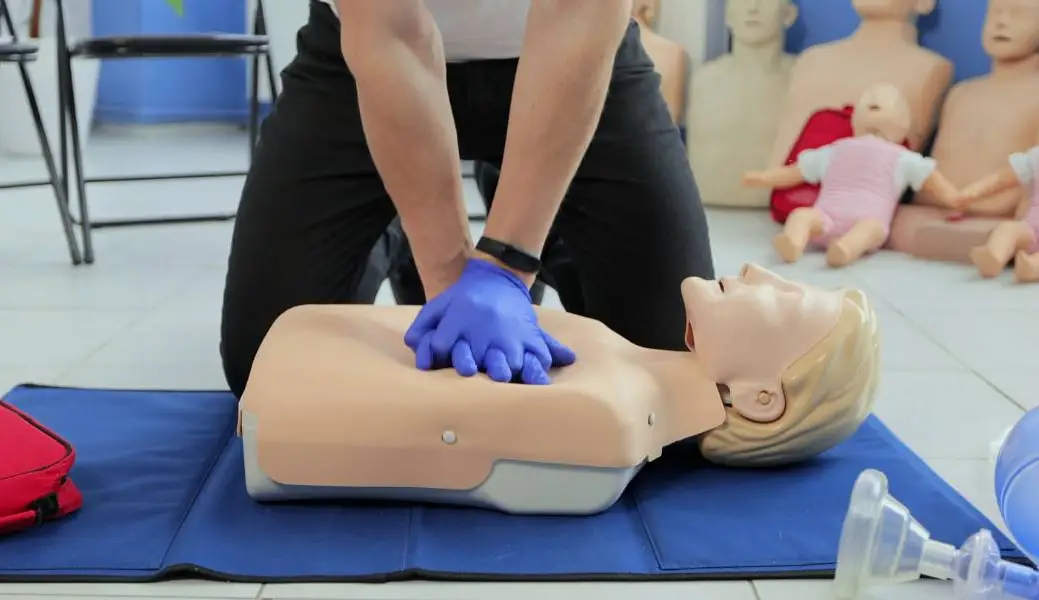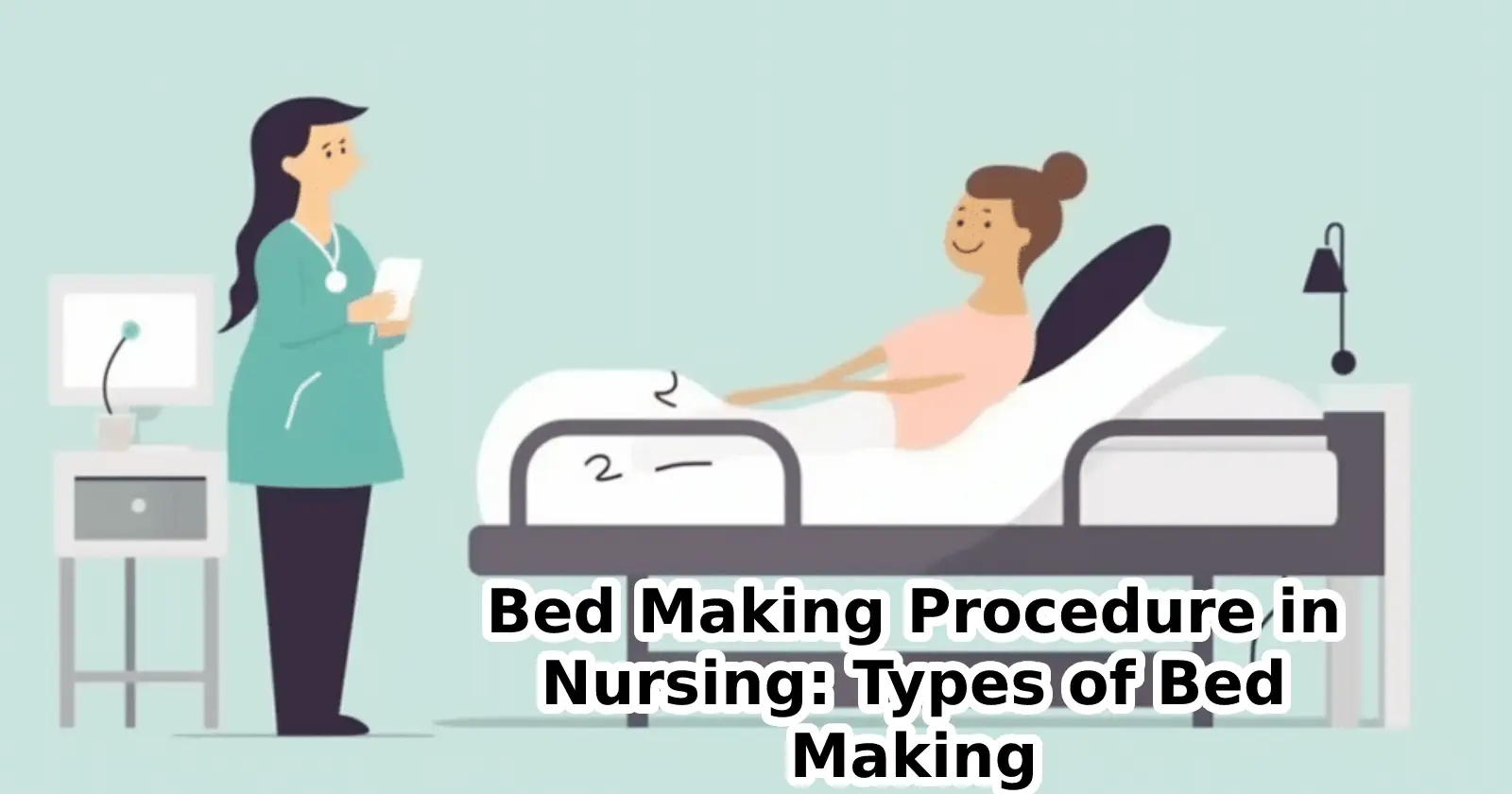CPR Full Form: The full form of CPR is Cardio-Pulmonary Resuscitation. In the CPR technique, Cardio refers to the heart, Pulmonary refers to the lungs, and Resuscitation signifies revive. CPR is often considered a life-saving technique during emergencies like heart attacks and cardiac arrest.
There are 3 main steps of CPR procedure which include chest compressions, oxygenation, and defibrillation. Cardio arrest can be caused by suffocation, drowning, or a heart condition. In this blog, we will explore the CPR full form in medical and know what are the 7 steps of CPR.
What is CPR?
CPR stands for Cardiopulmonary Resuscitation, a critical life-saving technique in medical situations such as heart attacks and cardiac arrest. The ultimate goal of CPR is to maintain blood circulation and oxygenation to vital organs like the brain until professional medical assistance arrives.
CPR Full Form in Hindi
Are you searching the keyword ‘cpr ka full form kya hain’ on Google? CPR medical abbreviation in Hindi is कार्डियोपल्मोनरी रिससिटेशन. This technique is mostly used in medical conditions like heart attacks and cardiac arrest.
What are the Different Types of CPR?
Different types of CPR techniques can be used depending on the patient’s situation. The main types of CPR are:
- Standard CPR: This is the traditional technique of CPR that combines chest compressions and rescue breaths. It involves performing a cycle of 30 chest compressions before giving two rescue breaths.
- Hands-Only CPR: This technique also known as compression-only CPR focuses only on chest compressions without providing rescue breaths. In this, the aim is to provide continuous chest compressions at a rate of 100-120.
- Pediatric CPR: This technique is mainly used for infants and children. It involves performing a cycle of 15 compressions followed by two rescue breaths.
What are the 7 Steps of CPR? CPR Procedure!
CPR is a vital life-saving method, so learning how to do CPR or how to give CPR is essential to us. We can give CPR in the following way:

Step 1 Assess the Situation: Before starting CPR, you should ensure that the area is safe for you and the victim. If it is safe, proceed to the next step.
Step 2 Check If the Patient is Responding or Not: Tap the patient gently and ask whether the patient is okay or not. If the patient does not respond, it is an indication to start CPR.
Step 3 Call For Help: If the patient is unresponsive, call for emergency medical services or ask someone to make an emergency call before performing CPR.
Step 4 Open the Airway: Tilt the patient’s head back slightly by lifting their chin. Open their mouth and check for any fastening like food or vomit. This process helps in opening up the airways.
Step 5 Check For Breathing: Place your ear close to the patient’s mouth to watch for the movements of the chest and listen to the patient’s breathing. If there is no breathing, it is urgent to start CPR.
Step 6 Start Chest Compressions: If the patient is in a gasping condition or not breathing, begin chest compressions. Place the heel of your hand on the center of the patient’s chest and interlock the fingers. The elbow should be straight and the shoulders should be positioned directly over your hands.
Step 7 Compress the Chest: Push the patient’s chest at least 2 inches deep at the rate of 100-120 compressions per minute. Allow the chest to fully move back between compressions.
Step 8 Give Rescue Breath: After 30 compressions two rescue breaths should be given. Pinch the patient’s nose and place your mouth fully over theirs, blow to make their chest rise. Continue this process until professional help arrives.
How to Perform CPR in Newborns and Infants?
Children are not likely to have heart attacks but there are other conditions in which the CPR technique can save the life of the infant/children. For a small child, the CPR procedure is done the same way as for an adult, but chest compressions are done with one hand instead of two.
CPR Procedure in Nursing
If you are a nursing student and searching for CPR kya hai or CPR Full Form, this article will be helpful for you. CPR stands for Cardio-Pulmonary Resuscitation, a life-saving first-aid technique. Therefore, every nursing student should learn how to give CPR or CPR procedures.
Conclusion
Hope you find the CPR Full Form. Knowing how to perform CPR is a valuable skill that can save lives in emergencies. If you like this article, please don’t forget to share it with others. You can also share your thoughts through the comment box. If you have any questions, please feel free to contact us.
Frequently Asked Questions (FAQs):-
01. What is the Full Form CPR?
Ans: CPR Full Form is Cardio-Pulmonary Resuscitation.
02. What is the Ratio of CPR in 1 Minute?
Ans: The ratio of CPR is 100-120 compressions per minute.
03. What is the Correct Ratio For CPR?
Ans: The correct CPR ratio is 30:2 for a single rescuer.
04. What is the CPR Ratio For Adults?
Ans: CPR for adults involves performing a cycle of 30 chest compressions before giving two rescue breaths.




